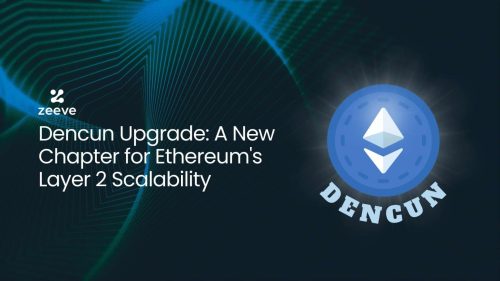
Dencun Upgrade: A New Chapter for Ethereum’s Layer 2 Scalability
As a front-runner in the Web 3 ecosystem, Ethereum boasts a robust ecosystem housing thousands of Dapps, with a TVL at the time of writing standing at $50 B. Ethereum has been able to achieve these landmark milestones, allegiance to rollups and side chains. However, at the heart of the protocol, Ethereum is able to provide scalability in the hierarchy—or, to put it simply, on L2s as its scaling layer.
However, considering the spike in network activity, the need of the hour is to provide infinite scalability at the base layer for L2s to enjoy near-horizontal scalability. In this regard, the Dencun Upgrade introduces the concept of scalability on top of scalability through data availability using single-slot finality (SSFs), Verkle Trees, KZGs, and Erasure Coding. It is the first step forward to grant limitless scalability to the Ethereum ecosystem.
This article will discuss what’s new in the Ethereum Dencun upgrade or EIP 4844 and what it means for Layer2s.

What is the Ethereum Dencun Upgrade for Layer2s?
Ethereum Dencun Upgradeis a major hard fork event after the Shapella that would grant limitless scaling to the base L1 chain by following a series of upgrades that would redefine the consensus and execution on the Ethereum layer using proto-dank sharding. More on that in the latter part of the piece.
But what is Proto-dank sharding, by the way?
Proto-dank sharding is an introductory temporary storage for the L2 chains that would allow them to store data temporarily on the Ethereum main chain until they are processed as a single transaction to be bolted on the Ethereum blocks. For that purpose, Proto-dank sharding or EIP-4844 introduces the concept of data blobs where the rollups will trigger a state change using the data blobs, and it would replace the call-data to blob-data; thereby significantly freeing up space on the Ethereum chain for even lighter and economical transactions in layer2s through Ethereum Dencun Upgrade. Proto-dank sharding will collectively use EIP-7045, EIP-7044, and EIP-7514, EIP-5656, EIP 4788 & EIP-6780 to achieve that for dapps banking on Ethereum for their final settlement.
Why was the Dencun Upgrade necessitated?
To understand why we need the Ethereum Dencun Upgrade for Layer 2s, we need to go back to the basics of how transaction finality works on Ethereum for L2s and L3 chains.
On the rollup chains, the transactions are bundled and posted for settlement on the main L1 chain for the change of the state of the rollup. As a result, the main L1 chain/aka Ethereum, works as the consensus/ settlement layer for the modular rollup chains, inheriting Ethereum’s security and liveliness in the hierarchy.
With such an approach, the competition for the block space on the Ethereum main chain turns brutal because every Dapp( on L2s and L3s) on the rollup chain wants to get their bundled rollup transaction included on Ethereum first. Since Ethereum records all the data on its main chain as call data, it can significantly impact the cost for settlements because every rollup environment wants to get their transaction processed first, and Ethereum has a specific block size for each block to include transactions.
This new Ethereum Dencun Upgrade for Layer2s introduces EIP-4844/ Proto-Dank sharding to lend horizontal scaling to all the rollups on the base chain. Ideally, all the rollups need settlement data to remain only until the contest/challenge period, and thereafter, they need not require that to give more room for other rollup data to use the same Ethereum blockspace for finality. Proto-dank sharding solves this problem by lending collaborative scaling to all the Dapps deployed on L2s.
How will Dencun Upgrade work?
Proto-danksharding introduces a new concept of blob-data instead of call data to help scale the Ethereum base layer. In this approach, the rollup chain will push data as blob-data and, EIP-1153 will perform data management by removing intermediate data transmission from blob blocks to Ethereum blocks, and EIP-6780 will restrict data destruction until specific conditions are met for finality.
Thereafter, EIP-5656 acts as a bridge between blob data and EVM to trigger a state change to affect the rollup environment collectively. For that purpose, other complementary technologies like KZG and Erasure Coding will have a key role to play in bundling up all the data coming from rollups on blob/shards to provide the leisure of scalability over scalability to L2s. In this way, it can help scale the base layer in the following manner:
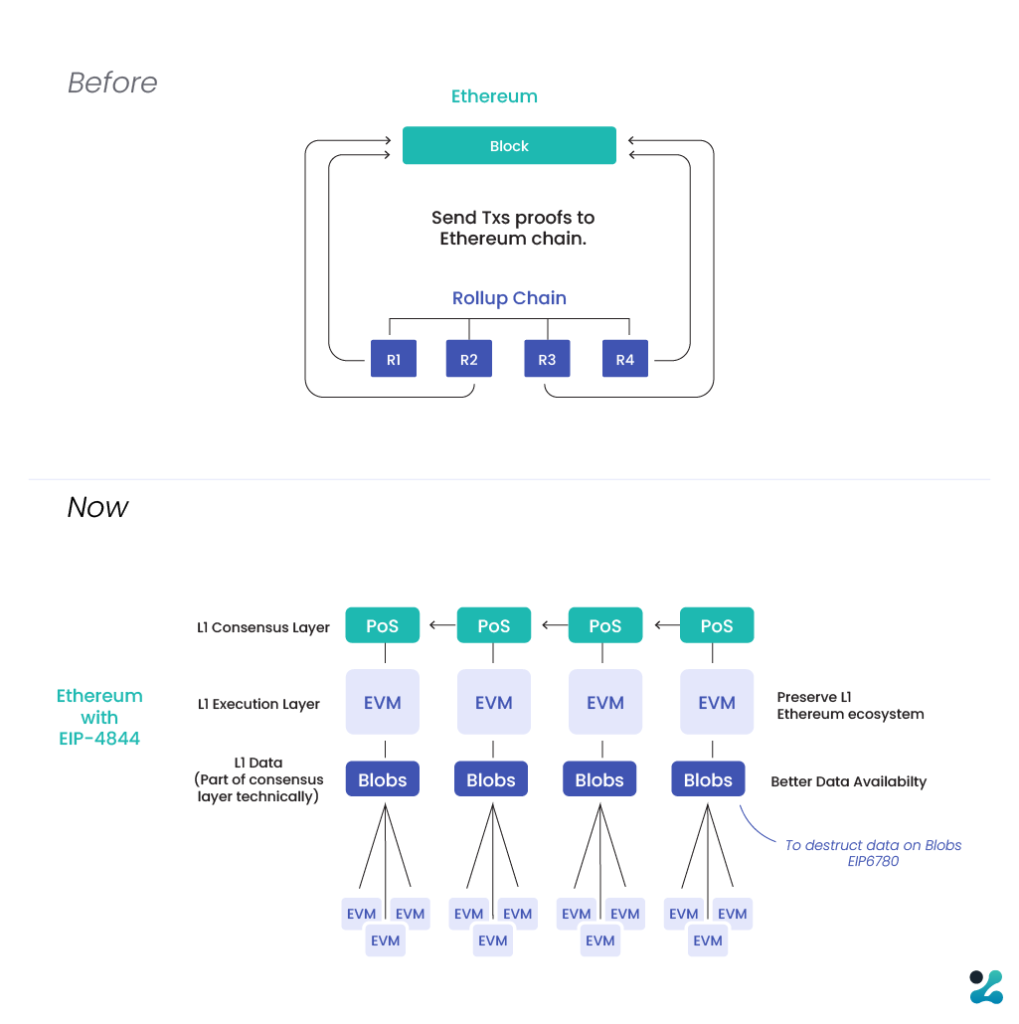
As you can see, the rollup chains post their transactions on the blobs through an EIP-1153 commitment that instantly clears the data from the block once the transaction has been settled.
The EIP-5656 will allow the EVM to trigger a memory management scheme triggered through EIP-7516, which will trigger the BLOBBASE FEE opcode on Ethereum to trigger the current base fee on the Network. This will prevent the L2 dapps from paying very high fees because, for transaction validation, the smart contracts from the Dapps will use Blob- Data rather than the traditional call-data that Ethereum contracts use to communicate with the rollup environment.
In this way, the rollup contracts can economically communicate with the Blobs and store transactions because, unlike a call-data transaction that communicates with Ethereum, the blob-data transaction performs computation off-chain. Thereafter, they submit a common proof on Ethereum blocks as Blobs. Ethereum validates for a state change for all the subsequent rollup data bundled together. The blob blocks self-destruct data upon execution to make way for the next transaction to be included for settlement and execution.
This process is triggered through BLOBSTORE and BLOBLOAD, new EVM Op-Codes introduced under the Ethereum Dencun Upgrade for Layer 2s. These codes allow the Ethereum Legacy L1 blocks to continuously rendezvous with the blobs that will inherit the validation from the DAS layer triggered through KZG and Erasure Coding for decentralization and security.
How Will the Ethereum Dencun Upgrade Impact the L2s?
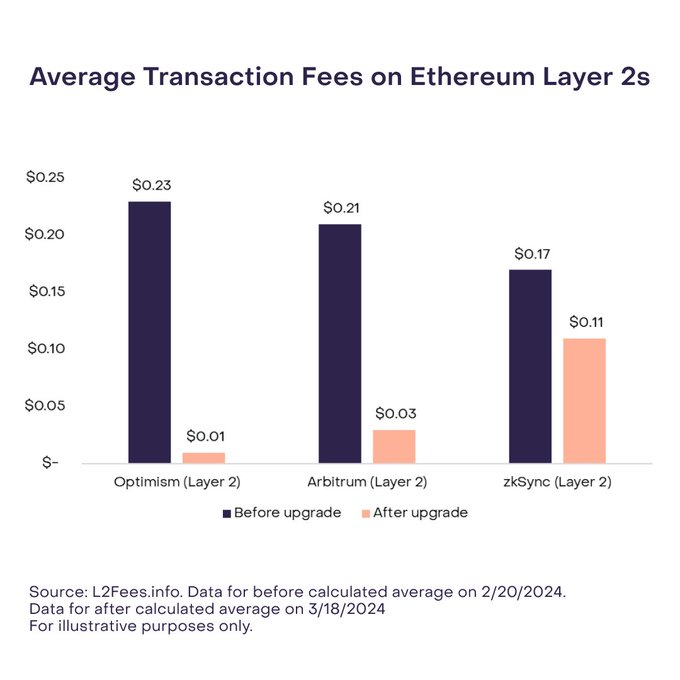
If you see the price effect of the Ethereum Dencun upgrade on popular L2 rollup chains, it’s 10 times cheaper. The above data is for Optimism, Arbitrum, and zkSync public chains before and after Dencun.
We can see that the fees have become negligible for OP rollups, while for ZK Rollups, they have become less, but not as low as the OP rollups. This is true for all other ZK chains as well, like Polygon or Starknet.
Ethereum Dencun’s upgrade for layer2s has significantly reduced the cost of data availability on Ethereum, and now what will matter is how cheap transaction executions can be.
This will have a ripple effect on layer3s as well. Basically, the reason projects were looking forward to deploying on top of L3s was to enjoy infinite scalability for their app-specific needs at a lower cost, which L2s somehow missed to fulfill.
In addition, thousands of apps deployed as L3s to match their project-specific needs, and posting the data on the Ethereum chain meant a very high computational load on Ethereum. The Dencun Upgrade has cut the cost on L2s by 10x. This means that projects can skip having an L3 strategy all the time and instead enjoy the same degree of freedom on L2 chains without affecting liquidity at the same cost.
But does that mean we don’t need L3s anymore? Definitely not. L3s are for specific kinds of applications with high transaction frequency. Hence, they would still want more fee reductions while settling for L2s to achieve lightning-fast transactions at even lower costs. A new on-chain internet demands new scaling models, and L3s will utilize the power of L2s in new ways.
However, the trend of launching our own custom L2/L3 chains will only go up from here, as the cost is likely to be less than that of standalone L2s for most use cases.


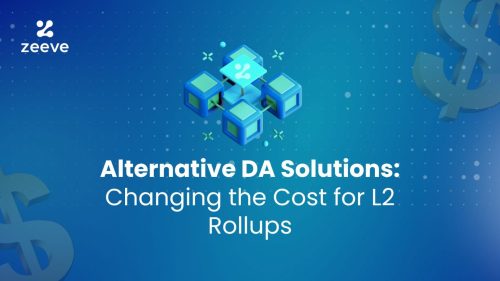

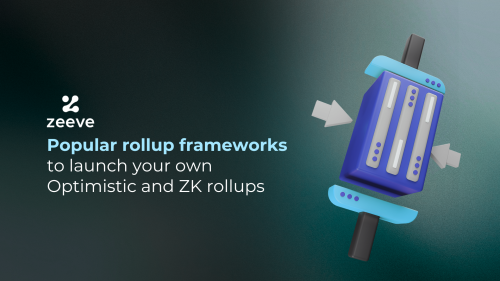
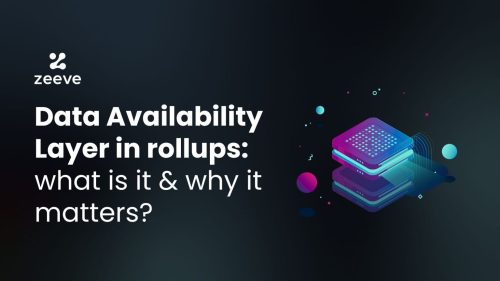
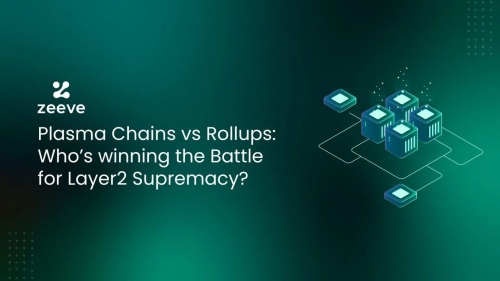
Responses